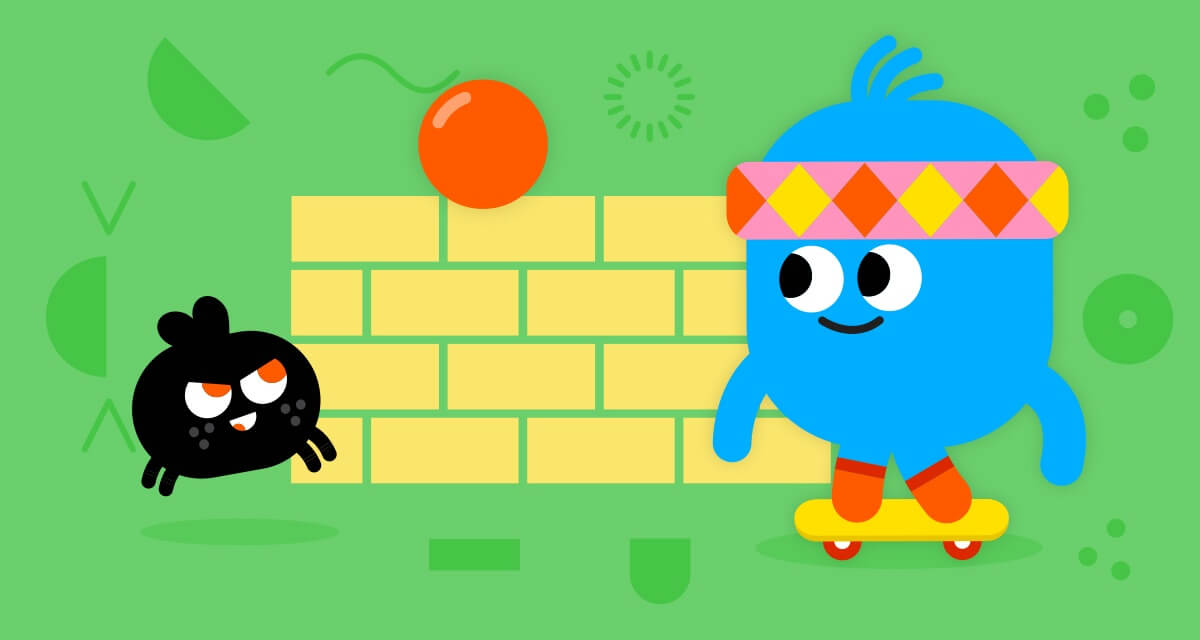Digital play and traditional play have more in common than you may think.
- By
- Parker Barry
It has been said that children love playing with cardboard boxes more than the toys that they once contained. Indeed, my own preschoolers travel the seas and visit distant planets while sitting in boxes on the living room floor, fueled by their imaginations after a family visit to the beach or the planetarium. They also draw with markers, build with blocks, climb on rocks and take loving care of soft plush pets and baby dolls. And virtually every day, they interact with a touch screen tablet or smartphone, and play something. What kind of play should that be?
Most important, children need a wide range of play opportunities, both digital and off-screen, for healthy development. And they need both physical and imaginative play. From dress-up to rough-and-tumble play, young kids need full-body engagement with the physical world. It develops motor skills, challenges and builds confidence, allows them to explore the wider social world, lets them experiment and build theories about how the world works, and helps them understand new experiences.
Digital play and traditional play have a lot in common
While digital play is typically less physical, it has a lot in common with traditional play and also has advantages that make it a valuable complement. Like the physical world, the digital domain can support play through games, puzzles, toys, open-ended sandbox-type materials and more. With digital apps, most of the action is usually on screen. However, apps can also use location and motion sensors, microphones and cameras to engage children in some kinds of full-body activity. And, they can use off-screen physical activity to support social play.
What’s unique about digital play is its mobility, convenience, and flexibility. Mobile apps can be played at home, in the car or anywhere kids happen to be. There are no small parts to lose, and a single device can store a virtual closet full of playful activities. And digital media can take forms ranging from traditional jigsaw puzzles to innovative augmented reality experiences and many forms in between.
Imaginative play is the priority
With such a variety of play potential, both on-screen and off, what should parents prioritize? In my view, child-centered imaginative play is number one. Given the preponderance of adult-created plot lines, characters and toys offered by the media and play industries, children often have few opportunities to engage in imaginative play of their own creation. When that happens, they miss out on something important.
Children’s imaginative play has long been recognized as an essential part of their healthy development, and is especially relevant in a 21st-century world that values traits like grit, self-control and perseverance along with the skills of problem solving, critical thinking and creativity. When kids make their own plans, express their own ideas, and negotiate activities with others, their play fosters the kinds of learning and development that they need most in today’s world.
How can apps support this kind of play? To assess the potential for sparking children’s imagination, I look at two aspects of any play environment: structure and drive. Structure is the pattern of play, and drive is whatever motivates children to engage in play — to do the work of imagining, building, interacting and creating.
Simple questions to ask when evaluating apps
Parents can assess which apps engage their children’s imaginations by watching and asking themselves a few simple questions. Where does the pattern of their play come from? Is it tightly defined by the content of on-screen challenges and levels of advancement in a game? Or, does the screen act as a springboard to express the structure of what’s already in their minds, or to co-create a new play pattern by interacting freely with a partner?
What about drive? Consider what motivates a child to focus on the screen and ignore nearby activities. Is it the external rewards of the app, praise for correct responses, accumulation of points and levels achieved? Or, is it the child’s inner drive to express themselves, see their ideas come alive on screen and satisfy their curiosity? While most apps mix these kinds of extrinsic and intrinsic factors to some degree, those that inspire the expression of children’s internal thinking and motivation are more likely to support imaginative play and its many benefits.
Social role play a promising category
One especially promising category of imaginative play is social role play. Just as kids use physical props to playact the social scripts that they experience in everyday life, they can also use digital props. For example, apps can help children explore social role play around themes like birthday parties, restaurants, grocery shopping, household routines or clothing and grooming. This form of role play looks different from the iconic image of a toddler dressed in her mother’s clothes clunking around the house in huge shoes: It is outwardly more subtle, but nonetheless significant.
To be clear, I do not advocate using digital play to replace role play with physical props. Rather, I have come to believe that certain open-ended apps can offer valuable alternative experiences. These digitally supported social experiences take three forms: face-to-face, mediated and parasocial.
Types of social play: face-to-face, mediated and parasocial
- Face-to-face role play involves kids sharing a tablet, taking turns touching on-screen objects and talking with each other. The interaction is live social play, inspired by the app’s theme. Toca Tea Party introduced this genre, but there are others, too.
- The second type of social play is mediated by the technology itself. For example, animation tools let kids create onscreen stories, narrate them and record the results. The process of creating these animations can involve social role play, and viewing the results may provide a new kind of social experience. Another example involves real-time interactions at a distance, as when two children in different locations use a shared drawing app connected via the Internet as a basis for pretend play.
- Third, children can engage in “parasocial” role play when they interact on screen with fictional characters. Research has shown that animated characters on television can entice children to respond verbally and physically, and even influence their food choices. Parasocial relationships with digital interactive characters may have similar effects. Currently, there are apps that use speech recognition technology to engage children in relatively open-ended conversations with on-screen characters. As speech and artificial intelligence technologies advance, we are likely to see many new opportunities for these kinds of relatively unstructured parasocial role play and learning.
As I write this final paragraph, I’m sitting next to my 4-year-old daughter who’s talking out loud to one of her favorite characters on an iPad screen. In this case, she’s mostly repeating the lyrics of his songs, not using a lot of imagination, but I know that these child-focused songs often emerge when prompted by everyday situations like sharing or cleaning up toys. And, I recall my two kids often pretending to share digital cake and tea on an iPad, while talking to each other in unusually polite voices. It’s clear that the new world of children’s imagination and play is a fluid mix of experiences with and without screens. I think that’s how it should be.
Jim Gray is an independent learning consultant.


